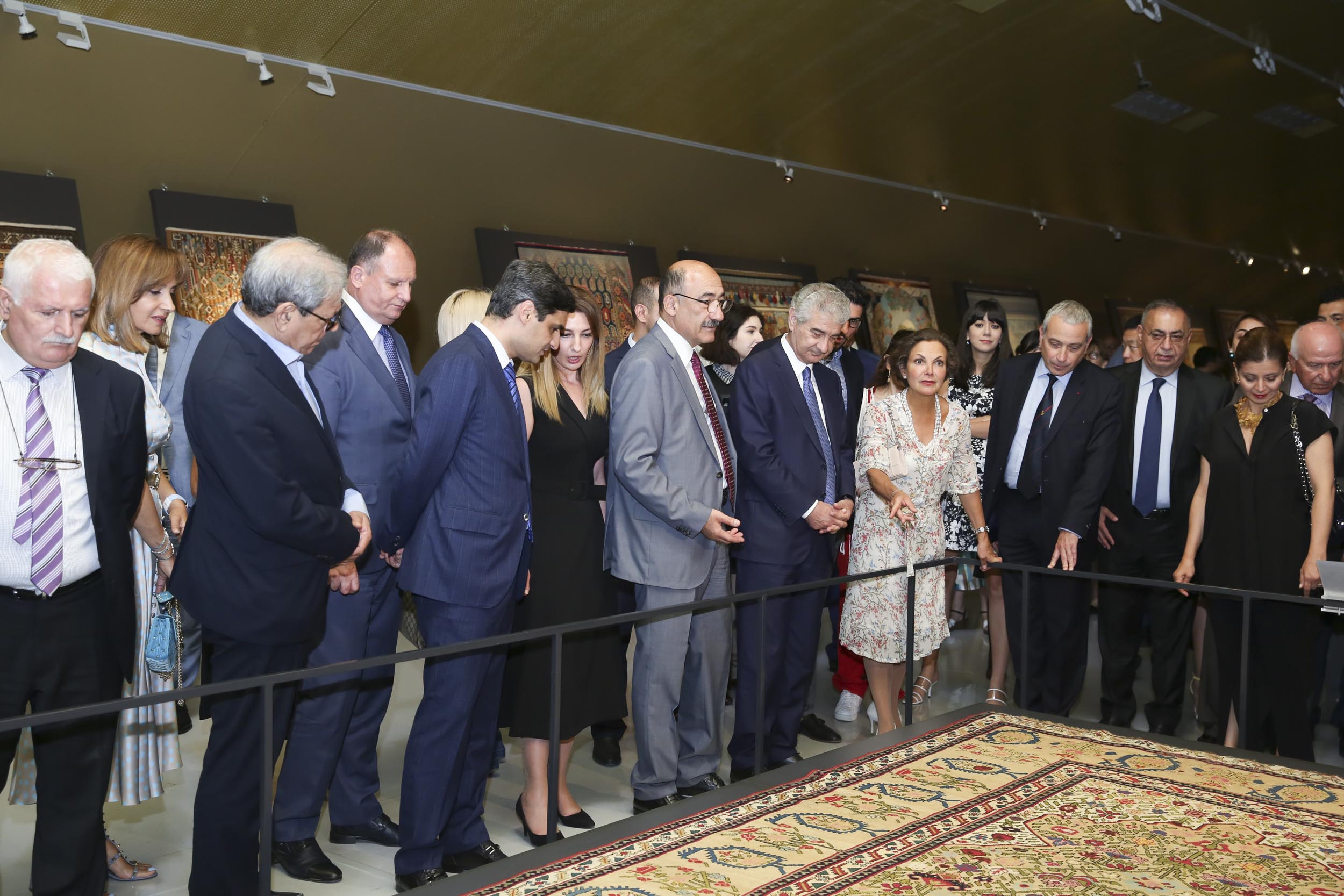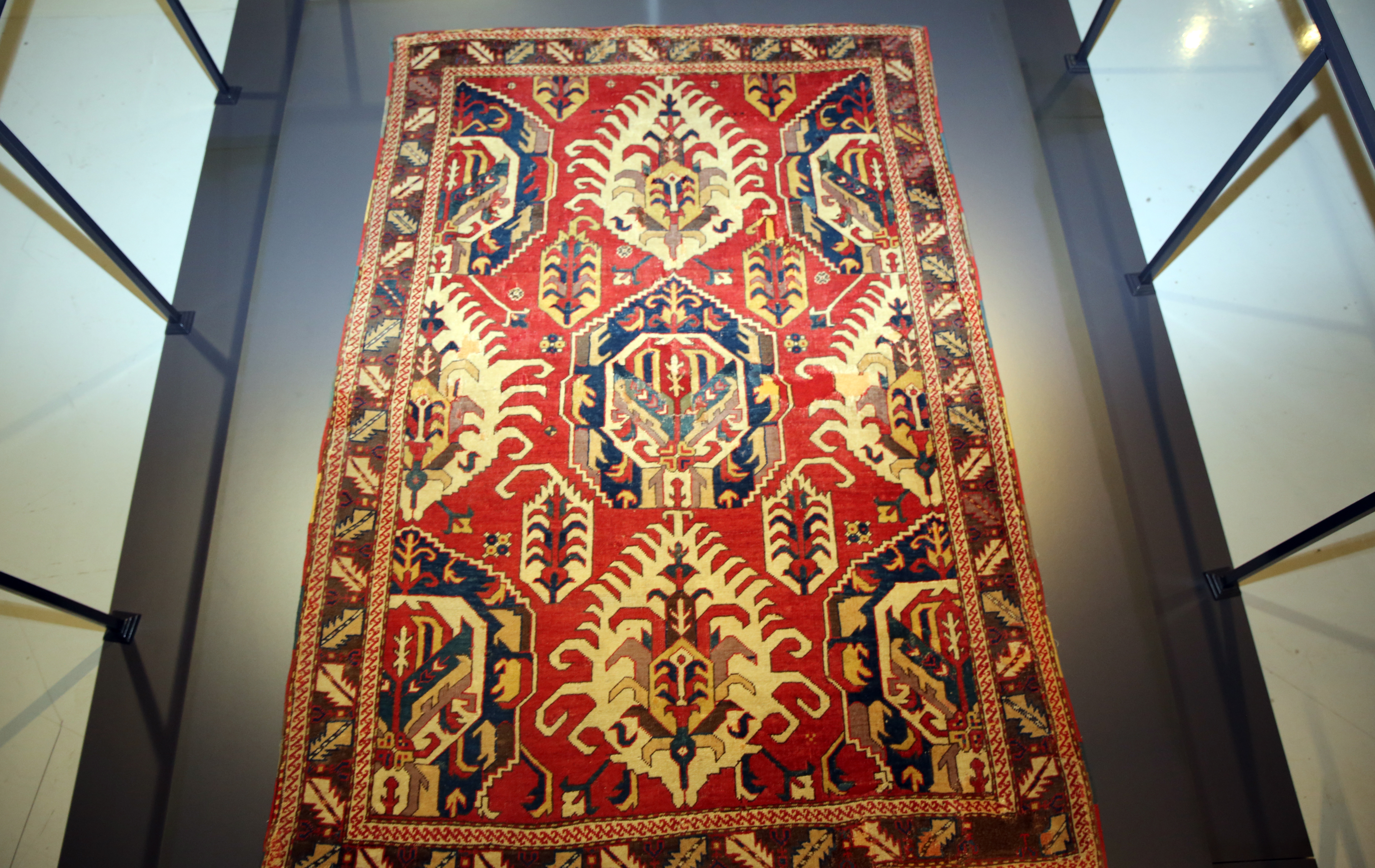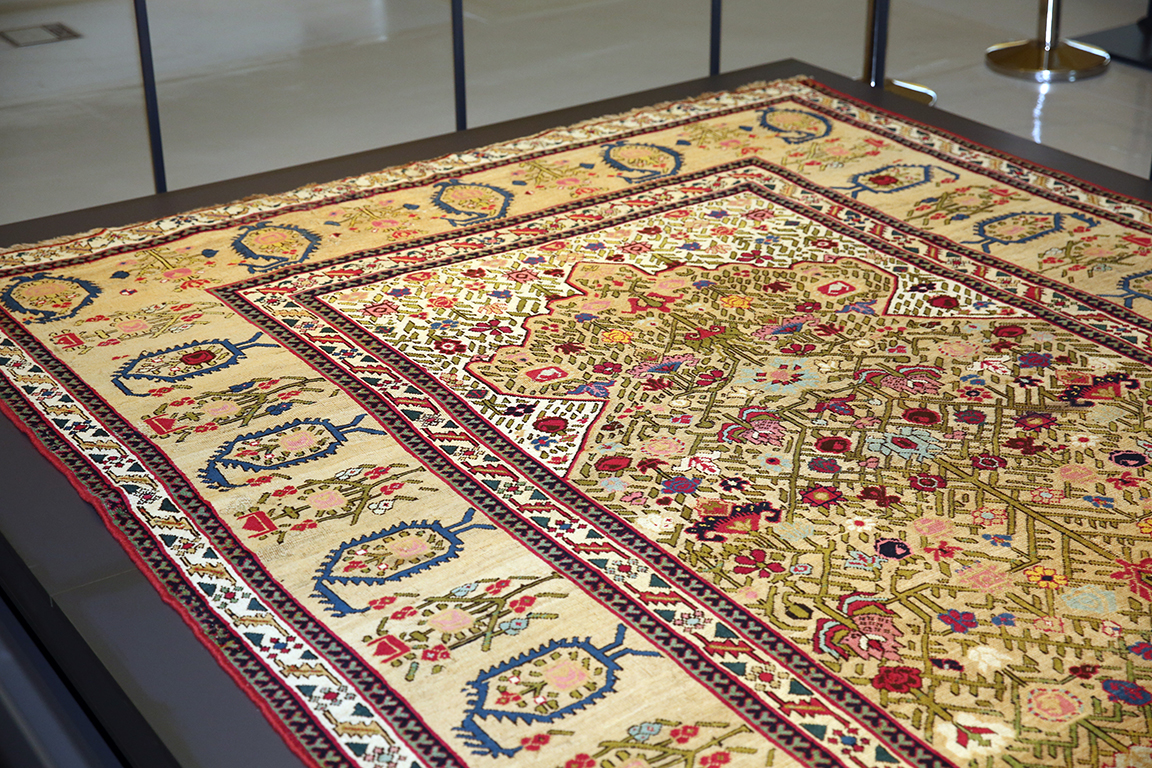An exhibition called “Cultural Heritage of Azerbaijan in the Louvre Museum” takes place in the Azerbaijan Carpet Museum. It is the first museum exhibition, organized in Azerbaijan together with Louvre, and it has enormous importance for the cultural life of our country. This project, which has become another contribution of the Azerbaijan Carpet Museum to the implementation of the State program for the preservation and development of carpet art in the Republic of Azerbaijan for 2018-2022, is intended to be the beginning of the fruitful cooperation of two museums. There are many exhibits related to Azerbaijan in the Louvre, so the prospects for such museum cooperation are quite attractive.

“The beginning of the future project was laid back in 2012, when Azerbaijan took a direct part in the process of creating the department of Islamic art at the Louvre. – Shirin Melikova, Director of the Azerbaijan Carpet Museum, says. – As is known, with the financial support of the Heydar Aliyev Foundation, new halls dedicated to Islamic art were created in the Louvre.”
On this basis, further negotiations were held between the head of the department of Islamic art at the Louvre and the director of the Azerbaijan carpet museum, Shirin Melikova. It coincided with the 43rd session of UNESCO. The project was supported by the Ministry of Culture of the Republic of Azerbaijan, the French Embassy in Azerbaijan, the French Institute in Azerbaijan and SILK WAY WEST AIRLINES CJSC.
The exposition includes three valuable specimens from the collection of the Islamic art department of the Louvre – carpets woven in the 18th and 20th centuries in Karabakh and Shirvan: Chelebi, Khanlyg and Ajdahaly.

Carpet one is made in Shirvan, with the composition “Ajdahaly” (beginning of the 18 century). These were common in Shusha, Barda and Nakhchivan, as well as in Shirvan. The middle field of the carpet is decorated with large palmetto-shaped patterns “Su zanbagy” (“water lily”) and elements of “ajdahaly buta”, that is, “dragon buta”, with the same pattern inside. The element “su zanbagy” on the Karabakh carpets means abundance and origin. It is usually adjacent to the dragon element, as the dragon symbolizes the mythological guardian of all living things.
Another exhibit is the Khanlyg Karabakh carpet. Its composition consists of a central element “Gyol” (lake) and openwork angular elements in the shape of a mihrab. In the border of this carpet, one can find elements of “Gotazly Buta” and “Tree of Life”, as well as ribbon-like elements of “Ajdaha”, symbolizing the dragon and water. This carpet amazes with the harmony of colors, in which the lead is a rather rare golden yellow color, popularly called “Nohudi” (pea color). Attention is drawn to the wide border of the carpet, in which the “buta” ornament rhythmically alternates with the “tree of life”. A large carpet, up to six meters long, was apparently woven to decorate the palace type of a Karabakh house.

And, finally, the Chelebi carpet dated to the end of the XIX – the beginning of the 20th century. These were woven in Karabakh, as well as in the village near Chelebiler Barda. In the center of the median field of this carpet there are two “gunesh” (“chelebi”) medallions, widely distributed in the weaving of Karabakh.
“This is the most famous carpet in the world, its various variations (with one, two and three medallions) are kept in major museums and private collections around the world, Shirin Melikova says. – Often, carpets with this composition are exhibited at auctions and sold for big money. Such carpets are associated with the ancient Sufi order, and the characteristic medallion is a symbol of this order, denoting the divine light. In earlier carpets, this medallion of plant character looks like a flower (the flower symbolized the sun, and its petals are the rays of the sun). Last year we replenished the collection of our museum with the carpet of the end of the 17 century “Nakhchivan”, the center of which adorns the medallion “Chelebi”. In later carpets, the ornament becomes more geometric, stretched horizontally. The collection of our museum contains several variants of Chelebi carpets, one of which is on display with three medallions. Louvre carpet is with two. Its technical and artistic data indicate that the carpet was woven in a professional workshop.”

Shirin Melikova particularly noted the excellent preservation of all three exhibits. They are woven according to the technology of Turkbaf (that is, “Turkic knot”, or a symmetrical knot), when they were created natural dyes were used. All this has a positive effect on the safety of carpets. She explained that an important role was played by the fact that in the West they always treated Eastern carpets with great reverence, they were very expensive, and not everyone had the opportunity to purchase them. Often they were not even laid on the floor, but hung on the walls, treated as a work of art. In addition, they were also given there as valuable gifts, and so they treated carpets as a value.
Text by Nailya Bannayeva











